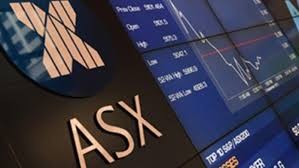Weekly market review
Written and accurate as at: Jan 29, 2018 Current Stats & Facts

The Australian equity market, as measured by the S&P/ASX 300 Price Index, finished the four day week with a small gain of 0.74%, extending the performance lag against its global peers. The calendar year to date return has seen our index generate a 0.15% loss, in contrast to the S&P 500’s 6.20% gain in US dollar terms.
The weakening US dollar over the week was the major macro theme: US Treasury Secretary Mnuchin’s talking down of the greenback weighed on the currency, despite President Donald Trump’s later speech that tried to reverse the damage. Commodity prices have also edged up as a result, with oil gaining another 3% amid decreasing inventories. Russia, one of the major oil exporters, has indicated its production adjustment process is well advanced – any further evidence of a more balanced picture of the oil supply/demand dynamics in the next few months might see the country pull back from the production curtailment it is currently adhering to. Bond markets, on the other hand, were somewhat less eventful last week with muted price movements. That said, the release of the US December PCE inflation and the January non-farm payroll this week is going to be closely watched by investors. Consumer demand as well as the domestic economy has been running hot in the US to date, as corroborated by the latest release of GDP data last week. Whilst the print fell below expectation on the headline level due to weaker inventory data, a look-through of the underlying data proves more encouraging.
Coming back home, Resources (+1.3%) led the charge last week whereas Industrials (+0.6%) fell behind as Financials (0.0%) finished the week flat. Stock performance divergence was subdued with few companies recording more than a 1% loss. Amongst the major detractors, media company Fairfax (FXJ) posted a loss of 6.3% as its Domain (DMG, -5.1%) fell 17% on Monday when its CEO resigned. DMG represents around two-thirds of the valuation of FXJ. Steel manufacturer Bluescope (BSL, -5.3%) also gave back some of its recent gains without any obvious catalysts – there was some tightening in the steel spread, but the magnitude was at odds with the stock losses, and the spread could be widening again soon. Finally, Commonwealth Bank (CBA, -1.5%) was the worst performing bank.
On the positive side, respiratory device manufacturer Resmed (RMD) locked in a 11.2% return for the week after reporting a good set of Q2 results across the board: sales growth of the flowgen machines hasn’t decelerated; whilst sales of the high-margin masks have also been growing at double digit rates globally. In addition, the distributors of RMD’s products, the DME (Durable Medical Equipment) suppliers are also under increasing regulatory/compliance pressure to do more granular reporting on their patients, which underpins the strong demand for Resmed’s products which help them achieve this. Being US domiciled, Resmed will also be a beneficiary of the latest tax reform, albeit only shortly: the underlying tax rate is expected to drop to ~15% (from 21%) for 2HFY18, but will revert back to ~21% following the passage of anti-hybrid tax legislation in Australia. Elsewhere, a few other growth stocks, including Treasury Wine (TWE, +9.0%), Seek (SEK, +5.2%), Car Sales (CAR, +5.0%) as well as Domino’s Pizza (DMP, +3.9%) also bounced back. Also gaining some momentum was Nine Entertainment (NEC, +7.9%) – the latest TV data was seen as supportive of TV ad spending, which is now back on the rise. This contradicts many people’s assumption that the ongoing trend of cord-cutting would suffocate the traditional media sector completely. Nine has done well in media ratings, and there are anecdotes that price rises for their advertising have been strong. The fresh round of media rating kicks off this week.
Last but not least, commercial explosives producer Orica (ORI, +4.9%) was up over the week, as people continued to play the second derivative of the mining story. QBE Insurance (QBE) on the other hand saw a big downgrade as new management took the reins. It was worse than expected, however the stock was up 4.8% as people start to buy into the turnaround story.










